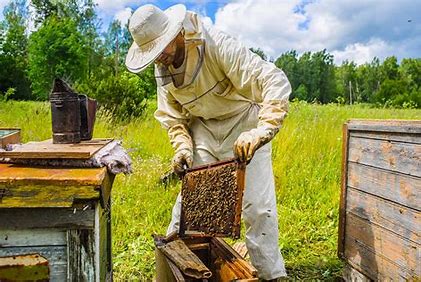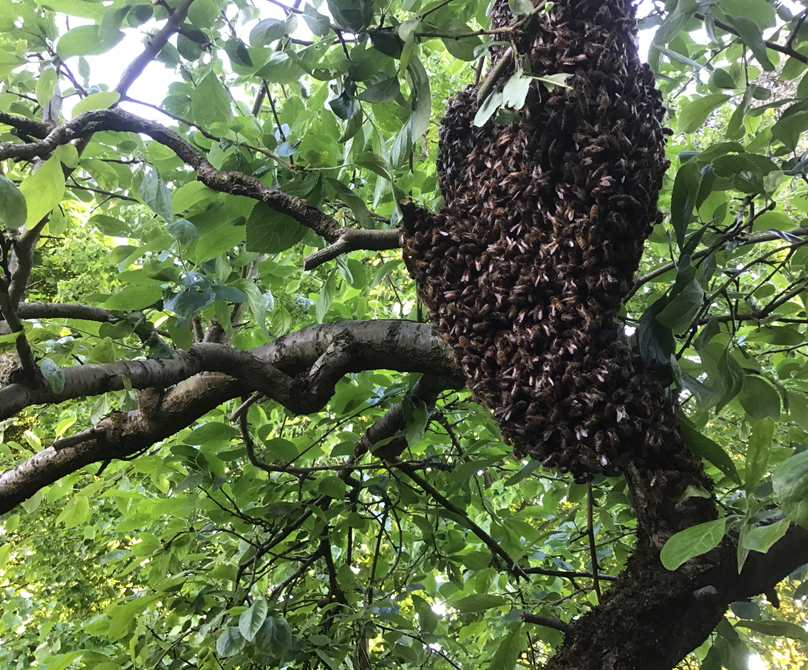The Importance of Bees- Miss Gitsham

Last week I gave a presentation to The Riddle Society on ‘Bees.’ My main focus was honeybees, because, as some of you know, I am a beekeeper, and I am fascinated by these amazing insects. I also spoke about some of the other species of bee that are native to this country and coincidentally, a couple of days later the BBC ran a story about a newly published study (in the journal Current Biology) to map all the species of bee in the world. It has shown that many species of bee, as well as other pollinating insects, are in serious decline. So, should we be worried or bothered by this? What is the point of buzzing, stinging insects?
There are about 20,000 species of bee in the world and 250 are native to Britain. Some are social insects and many more are solitary. Social insects live in groups of individuals. The group or colony may consist of as few as 50 individuals, in the case of bumblebees, or tens of thousands in the case of honeybees. Solitary bees, as the name suggests, live as individuals but they are extremely important as pollinators and as part of the overall ecosystem.
Bumblebees are perhaps the most visible and audible of our native bees. They come in all shapes and sizes, but the most familiar are the large queen bees that emerge from hibernation in spring and are a common sight in gardens throughout the summer months. There are 25 species of bumblebee in this country, but in the last 50 years some have become extinct, largely due to habitat loss, use of pesticides and climate change. Others are on the endangered species list and are extremely rare. You might be interested to know that an old English name for a bumblebee is a Dumbledore and J.K. Rowling said in an interview that she imagined the Hogwarts’ headmaster humming to himself and being like a busy bee.
Solitary bees, like bumblebees, come in all shapes and sizes and their names often describe what they do, for example, the leafcutter bee, mason bees and miner bees. An adult female leafcutter bee chews through a leaf and carries a circular piece of that leaf to a hollow stick where she lays an egg. She will then seal the end of the stick with the leaf. Other bees use mud in a similar way and if you have ever looked closely at a bug hotel, you might have noticed the end of hollow canes have been sealed. This is a tell-tale sign of solitary bees at work.
All bees pollinate flowers which is an essential process. The familiar quote, “If the bee disappears from the face of the earth, man will have no more than four years to live” is often attributed to Albert Einstein, although there is no evidence that he ever said this. The quote is not even accurate as many cereal crops – wheat, barley, oats and rice – are wind pollinated, so we would not starve. That being so, bees are responsible for pollinating about a third of the world’s food crops and in Europe the figure is higher. Next time you go into a supermarket or sit down to eat a meal, think about how many of our common fruits and vegetables are pollinated by insects. The list includes apples, tomatoes, pears, plums, strawberries, beans, peppers, onions, cucumbers, and apricots.
Without our pollinators we would have a much less varied diet and there would be far-reaching consequences for whole ecosystems. Not only do insects pollinate plants, but they are a food source for many birds, amphibians, bats and reptiles.
What can you do to help? Think about making a bee hotel over the Christmas holiday. Next spring plant some wildflower seeds and try and live more sustainably. If you need help with that, read Mr. Guttierrez’s rant in the previous edition of The Bubble.
















Post Comment
You must be logged in to post a comment.